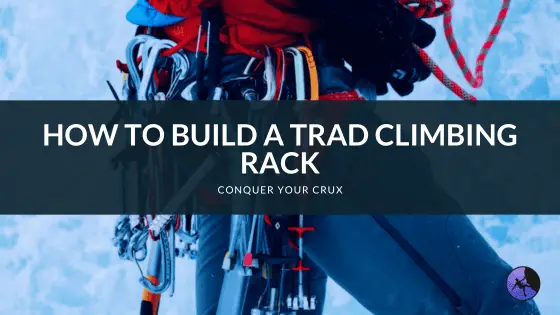If you have ever been to a climbing cliff, you have likely seen a chain of loops attached to the climber’s harnesses and wondered what it was. We’re here to answer that question. It is called a PAS or a personal anchor system and is designed to help keep you safe while climbing.
If you have questions about what a PAS is used for in climbing or which PAS you should get, you have come to the right place! We will help answer all your PAS-related questions.
What is a PAS Used for in Rock Climbing?
A PAS is a personal anchor system. This piece of climbing gear can be used in various ways to help keep you safe while climbing. Although not essential for any of these functions, it can be used to extend a rappel, help clean a sport climbing anchor, or help secure you to a solid place.
A PAS is a series of interconnected loops either made from nylon webbing or Dyneema webbing that can be clipped into an anchor point using a locking carabiner. By adjusting which loop you clip into the carabiner, you are able to change the length of the tether that the PAS creates. The other end of the PAS is girth hitched onto your harness, securing it to you.
Most adjustable personal anchor systems are made and sold with the sole purpose of being a PAS, but some people prefer to create their own from a sling. Figuring out which one is best for you in the personal anchor system vs. sling debate is generally simple. If you have the knowledge to use a sling, that would be more cost-effective, but for most climbers, investing in a PAS is a safer and simpler option.
It is worth noting that while most PAS on the market looks like a chain of fully rated loops, there is another piece of gear called a daisy chain that can look similar as well. Unlike a PAS, where each loop is fully rated, a daisy chain does not have fully rated loops. It can be easy to confuse these two pieces of gear, but make sure you are using a PAS and not a daisy chain since they are not interchangeable pieces of gear.
Is a PAS an Essential Piece for Climbing?
Is a PAS necessary for climbing? Do you really need one? The short answer is no, you can do everything that you would do with a PAS using other tools. Many experienced climbers opt not to use a PAS but instead use various other tools.
Many newer climbers, however, find that a PAS is a necessary tool since they don’t know how to use the other tools yet. Figuring out how to use a personal anchor system is much easier than learning all the other tools that would be necessary to fully take the place of a PAS, which is why new climbers tend to love their PAS.
 How to Use a Personal Anchor System?
How to Use a Personal Anchor System?
Understanding how to use a PAS when climbing is simple, but it depends on the circumstance you are using it. The most common times that people use personal anchor systems are when they are cleaning a sport climbing anchor or extending a rappel, so we’ll be talking about how to use a PAS in those contexts.
Cleaning a sport anchor
Having a PAS when cleaning a sport climbing anchor can make you feel more secure, especially for the first few times. With the addition of permanent carabiners or clips on many new sport climbing routes, however, the PAS is becoming more and more obsolete. Understanding how to use it if you ever come across a set of bolts with chains and rappel rings can be a very helpful skill.
Assuming you arrive at a set of bolts with chains and rappel rings, you should first attach your PAS into one or both chains, depending on your preference, with locking carabiners. Now that you are secure and safe, you are able to move ahead with cleaning the anchor. Regardless of if you use the Petzl Pass or any other technique to actually clean the anchor, you know you are safe the whole time until you are either ready to be lowered or have set up a rappel. At that time, you can unclip your PAS and continue with your descent.
Extending a rappel
Extending a rappel is a great skill, and having a PAS makes it much easier to learn. Once you know how to extend a rappel, you can use other tools that you might already have on you, such as a sling, and forgo the addition of the PAS, but for the beginning, a PAS makes it a lot simpler.
Using a PAS to extend your rappel means that your rappel device is farther away from your body, leaving you room on your harness to secure a friction hitch as a backup. Having your rappel device farther removed from your body also helps prevent your clothes or hair from getting caught in the device and gives you more room to manage the rope with your hands and minimize the chance of getting your hands pinched.
Is a PAS the Same as a Sling?
A PAS can be similar to a sling in many uses, but it is not ultimately the same. Many experienced climbers opt to create their own temporary PAS out of a sling, but this requires more knowledge than most climbers have to start out.
Slings and personal anchor systems can both be used to help clean sport anchors, keep you safe and secure, and extend a rappel. They can both also be used in anchor building and equalization. Although the sling and PAS have a lot of overlap in their potential uses, a sling offers many more potential uses than a PAS, making it a great choice for a more experienced climber who climbs in various locations.
3 Best Personal Anchor System (PAS)
There are many options out there for picking which PAS is right for you, but don’t worry. We’re here to help! These are some of the best personal anchor systems on the market and a few of our favorites:
1. Metolius Personal Anchor System: PAS 22
There’s a reason that this PAS is the most common one to see on cliffs all across the country. It’s not too pricey but is super strong and durable. Each loop on this PAS is rated to 22 kN, making it a great, safe option. The convenient color system makes it easy to always find the loop farthest away from you, so you won’t find yourself grabbing the wrong loop on accident.
This PAS is not dynamic and is not made to take the forces of falls, but it is long enough to be perfect for most static scenarios. The PAS can even be incorporated into an anchor due to its strength and versatility. At $39, this is a great option for most climbers.
2. Metolius Dynamic PAS
For a little bit more energy absorption than the PAS 22, look no further than the dynamic PAS that Metolius makes. This PAS is rated to 15 kN and is made with a dynamic climbing rope material making it great at absorbing the impacts from smaller falls.
Similar to Metolius’s other PAS, the PAS 22, the dynamic PAS also features color coding making it super easy to find the loop farthest away from you at any point in time. At $44, this PAS is a little pricier but is a great option nonetheless.
3. Petzl Connect Adjust
The unique design is what makes this PAS stand out from the others. Unlike the loop design that both Metolius personal anchor systems utilize, the Petzl Connect Adjust is a single rope with an adjustable piece in the middle. It allows you to change the length of your tether without having to unclip your carabiner.
Made with rope instead of Dyneema webbing, this PAS has more stretch and give than the PAS 22. Coming in at just shy of $50, this PAS is on the pricey side, but some find it to be well worth the money. While some climbers love their loop-designed PAS, others find this adjustable PAS to be the best they can get.
Safety Considerations When Using a PAS
Although a PAS is designed to help keep you safe, it can still be used improperly, making it unsafe. Understanding how to use a PAS before you are hanging in the air and trusting it with your life is essential to your success when using the tool.
The main thing to be aware of, once you actually know how your PAS works, is that a PAS is made out of a soft material. Regardless of if you are using a Dyneema or nylon PAS, both will degrade over time. Most manufacturers will tell you why you buy the product and how long you should use the product before retiring it. It can be tempting to use a product longer than you should, but it is designed to keep you safe, and it can only do that if you don’t let the material degrade.
Another thing to think about when using a PAS is the attachment point between the PAS and your harness. Both your harness and the PAS are soft goods, so leaving them attached together with the same girth hitch for years can cause abrasion, damaging both pieces of gear. Make sure you take your PAS off between climbing trips and let both your harness and the PAS take a break from being cinched in a girth hitch all the time.
Wrapping Things Up: Is a PAS Necessary in Climbing?
From figuring out which PAS is best for you to help you understand the times when you might find yourself using a PAS, we hope we have cleared up any confusion you might have around the chains of loops that climbers rely on. Are they 100% necessary? No. But are they nice to have? You bet!



 How to Use a Personal Anchor System?
How to Use a Personal Anchor System?



